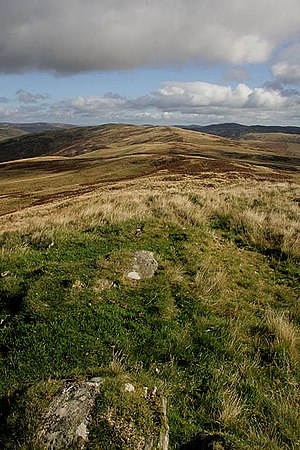
The geography of Scotland in the early modern era covers all aspects of the land in Scotland, including physical and human, between the sixteenth century and the beginnings of the Agricultural Revolution and industrialisation in the eighteenth century. The defining factor in the geography of Scotland is the distinction between the Highlands and Islands in the north and west and the Lowlands in the south and east. The Highlands were subdivided by the Great Glen and the Lowlands into the fertile Central Lowlands and the Southern Uplands. The Uplands and Highlands had a relatively short growing season, exacerbated by the Little Ice Age, which peaked towards the end of the seventeenth century.
A network of roads developed in the Lowlands in this period. Drover's roads, between the Highlands and north-east England, had become established by the end of the seventeenth century and a series of military roads were built and maintained as a response to the Jacobite risings in the eighteenth century. At the beginning of the period, most farming was based on the Lowland fermtoun or Highland baile, but a system of land ownership based on large estates emerged. This was the beginning of a process that would create a landscape of rectangular fields and carefully located farm complexes with interconnecting roads. There was an attempt improve agriculture, resulting in new crops, techniques and enclosures began to displace the run rig system and free pasture.
There are almost no reliable sources with which to track the population of Scotland before the late seventeenth century. It probably grew for most of the period, reaching 1,234,575 by 1691 and 1,265,380 by the first census in 1751. Compared with the situation after the redistribution of population as a result of the clearances and the Industrial Revolution that began in the eighteenth century, these numbers were more evenly spread over the kingdom, with roughly half north of the River Tay. Most were housed in small hamlets and isolated dwellings. The Little Ice Age saw the abandonment of marginal land, but new settlements were created as a result of the opening up of hunting reserves like Ettrick Forest and less desirable low-lying land was also settled. As the population expanded, some settlements were sub-divided to create new hamlets. Perhaps ten per cent of the population lived in one of the many burghs that had grown up in the later Medieval period, mainly in the east and south of the country. By 1750, with its suburbs, Edinburgh had reached a population of 57,000.
By the early modern era Gaelic had been in geographical decline for three centuries and had begun to be a second class language, confined to the Highlands and Islands. It was gradually being replaced by Middle Scots. From the mid sixteenth century, written Scots was increasingly influenced by the developing Standard English of Southern England, which came to dominate elite discourse. After the Union in 1707 the use of Gaelic and Scots were discouraged by many in authority and education, as was the notion of Scottishness itself. The extent and borders of the kingdom had been fixed in their modern form by the beginning of the sixteenth century, with the exception of the debatable lands, settled by a French led commission in 1552. The accession of James VI to the English throne made the borders less significant in military terms, becoming, in his phrase the "middle shires" of Great Britain, but it remained a jurisdictional and tariff boundary until the Act of Union in 1707. Edinburgh had emerged as the capital in the fifteenth century and continued to be a major administrative centre. From the seventeenth century the responsibilities of shires expanded from judicial functions into wider local administration. The parish also became an important unit of local government. By the mid-seventeenth century this system had largely been rolled out across the Lowlands, but was limited in the Highlands. There was much greater awareness of geography and political boundaries in this period and Scotland was extensively mapped for the first time.